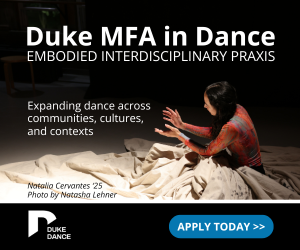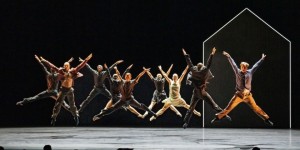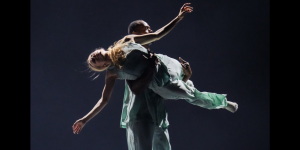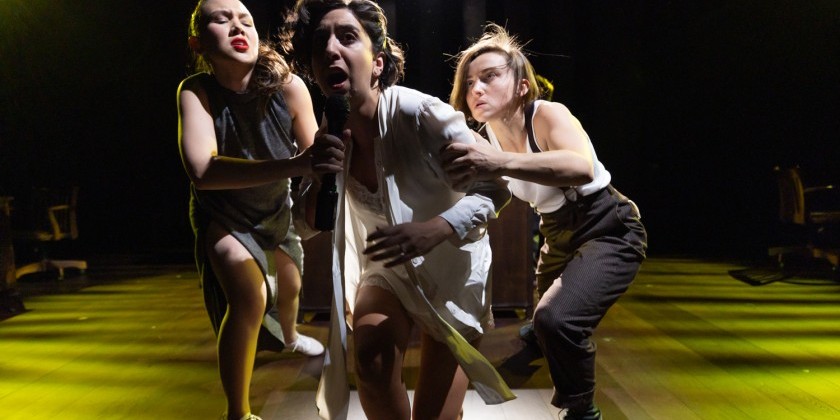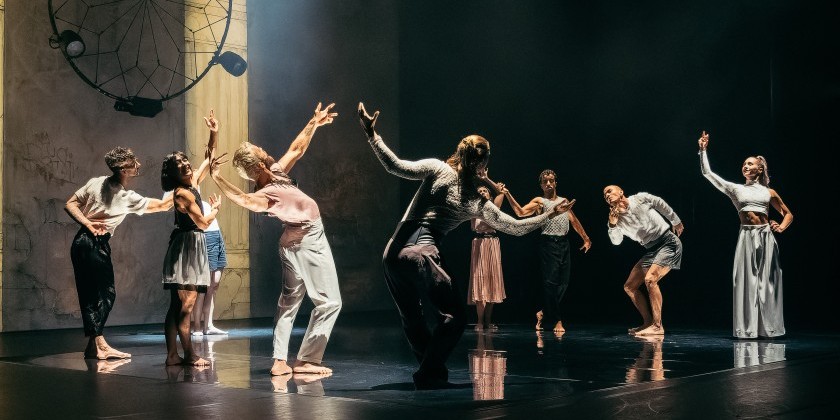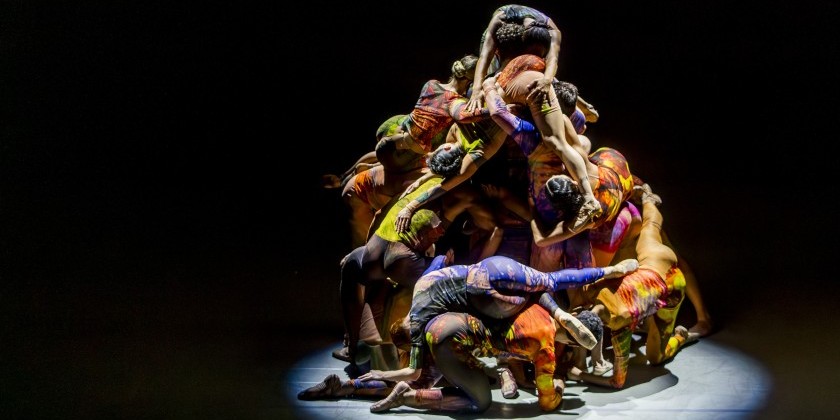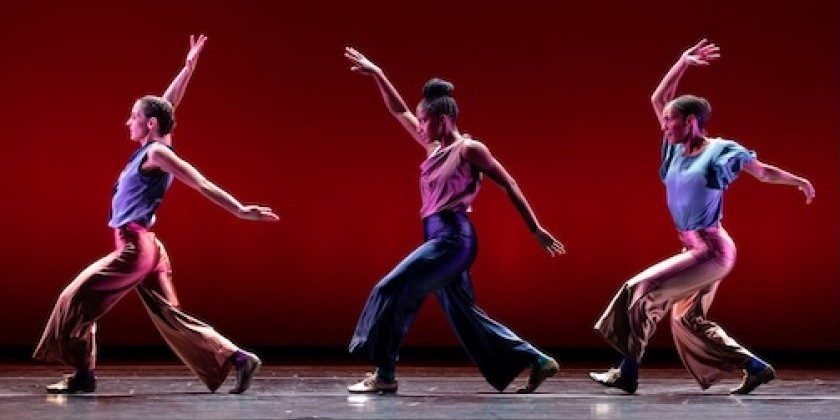IMPRESSIONS: Paris Opera Ballet in Hofesh Shechter’s “Red Carpet”
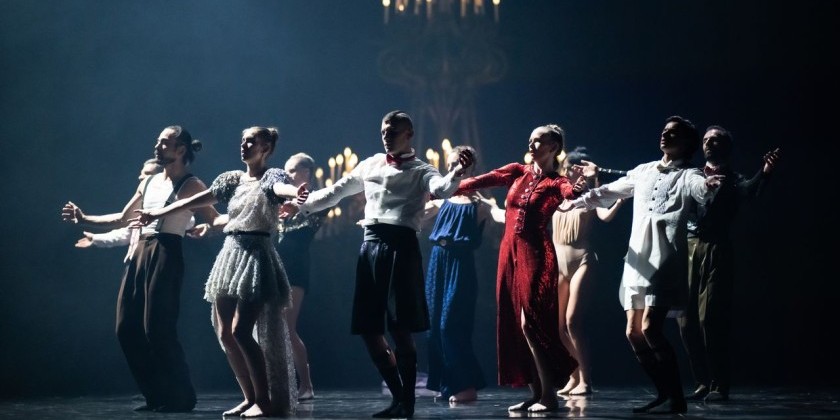
Choreography, Music, and Set Design: Hofesh Shechter
Costume Design: CHANEL
Lighting Design: Tom Visser
Dancers: Adèle Belem, Takeru Coste, Alexandre Gasse, Marion Gautier de Charnacé,
Clémence Gross, Julien Guillemard, Antoine Kirscher, Mickaël Lafon; Laurène Levy,
Loup Marcault-Derouard, Caroline Osmont, Hugo Vigliotti, Ida Viikinkoski
Musicians: Yaron Engler (drums, Music Collaboration), Olivier Koundouno (cello),
Marguerite Cox (double bass), Brice Perda (wind instruments)
New York City Center
October 9 - 12, 2025
With roots extending back to 1669, the Paris Opera Ballet is so famously associated with the provision of exquisite classical dancing that some of my ballet-loving friends decided to forego the company’s recent engagement at New York City Center — its first major appearance here since 2012 — when it was announced that it would not be a classical-ballet program.
Rather, the company brought the New York premiere of London-based Israeli choreographer Hofesh Shechter’s Red Carpet. Evidently, it’s mainly among its hometown Parisian fans that the prestigious ballet troupe is equally appreciated for its presentation of exciting contemporary works by living dance-makers. So, to my American pals, I have to say, sorry, you missed an intoxicating affair! With its hints at rave culture, a quartet of tuxedo-clad onstage musicians supplying a pulsating score of Middle Eastern folk-flavored, electronic rock music, and 13 dancers dazzlingly outfitted by CHANEL, Shechter’s glamorous contemporary dance piece exhilarates — that is, most of the time.

The consistently thrilling aspect of the 75-minute, plotless work is Shechter’s infinitely interesting movement vocabulary, a sensual combination of the primal and the precise. Bold, earthy, rhythmic full-body movements are decorated with an ever-changing array of neat, witty, isolated gestures that never fail to surprise. A heavily grounded, sometimes ritualistic quality pervades, as the dancers work in plié much of the time. Yet they may also rise up and prance about on “tippy-toes” for a bit, or flick their hands prissily about their heads as if “painting” in the air, while their pelvises thrust forward with aggressive, erotic ferociousness. There are a lot of warm, deep throbbing motions and isolations of the shoulders, head, and chest. The dancers run with raised upturned arms reminiscent of Israeli folk dance, or perform animalistic chest contractions that suggest creatures “on the prowl.” They hunch over ape-like and race around circling their hips enticingly. Or they gesture like rappers and strut in imitation of models down a runway. Borrowing Fosse-esque dance steps (think, those snooty Sixties club-goers from Sweet Charity’s “Rich Man’s Frug”) the performers manage to evoke the air of fashionable wild partiers, while maintaining a rough tribal sensibility. Sometimes they move their arms in ways that suggest drinking tea, other times it looks like they’re doing classical ballet barre exercises. Shechter creates a phenomenal blend of the raw and the refined. And the dancers perform it all with facial expressions that scream, “I’m strong, sexy, breathtakingly gorgeous — and I know it!”

Though everyone in the mixed gender cast dances brilliantly, Shechter’s movements read more convincingly on the male bodies, as they express the weight — a key element of the vocabulary — more effectively than do the females. Yet I think the discrepancy is partly due to the costuming. The men are “half-dressed” in glittery, sequined pieces of formal nightclub attire — it’s as if we caught them in the middle of putting on their outfits. One wears plain black bicycle shorts topped by a glistening gold jacket. Another sports a long dress shirt over bare legs with black socks and garters. Only their upper bodies are fully clothed, while their bottom halves remain more exposed.
The ultra-thin ballerinas, however, are costumed in long slinky, sleeveless gowns that disguise some of the heavier components of their dancing, so the movement vocabulary’s signature blend doesn’t register as clearly. It can look like the women are just performing an abundance of arm movements. We can’t really feel the energy of their pelvis, back, and thigh actions, whereas we can easily discern how the men’s arm gestures relate to everything else going on in their bodies. Also, the women’s costumes are totally “glam,” while the men’s half-clothed style mirrors the vocabulary’s striking contrasts.
Strangely, about half-way through the piece, the dancers exit and return wearing non-descript beige leotards that they remain in for the remainder of the work. I don’t know why they do this. It subtracts from the overall dramatic effect of the choreography.

Constructed largely of big ensemble passages, the choreography contains just a few solo and small group passages, most notably an imaginative male solo that commingles athletic ballet vocabulary with crude gesturing. Yet what’s most interesting about Shechter’s choreographic scaffolding is how imperceptibly a very tidy unison segment performed by a sub-set of the group will emerge from a stage full of individuals all “doing their own thing” and then how that sub-set’s geometric formation “disappears” as its dancers re-join the messy mass of independently moving bodies. The regular appearance and dissipation of these highly-organized group sections is what sustains our attention as the work proceeds, broadly. In a way, the macro choreographic interplay of “orderly” and “sloppy” reflects the micro merging of the precise and primal elements within the individual words of the work’s movement language.
Choreographically, Shechter’s piece is marred only by what I call its “suspensions” — over-extended periods of slow, minimal moving to quiet music — which occur on several occasions throughout the work. They sometimes feel meditative, as angelic sounds conjure a dreamy, floating sensation, with dancers stretching in slow-motion, sitting cross-legged, or forming simple group configurations as they clasp hands, prayerfully gaze heaven-ward, or stand at the edge of the stage and stare out at us (yes, that old cliché). Whereas we initially welcome these as restful, re-fueling breaks from the high-octane action, they go on too long and don’t progress the work in any meaningful way. Afterward, we return to the same place as before. But it was a great place to be, so I’m not really complaining.

Typically, it’s the music that “rescues” us from these suspension periods and escorts us back to more exuberant proceedings. I remember how happy I was after the first lengthy “time out” when I heard the sound of snare drums re-introducing a rhythm to which ensemble members literally dragged their “praying” colleagues back into action. Composed by Shechter, the music is the work’s engine. Blasted, rock-concert-loud throughout, it sounds mostly like electronic club music, with wailing, folksy qualities emerging from time to time. Almost always there’s an inescapable, driving beat, sometimes muted, that’s perfectly paced to support the dancing: it’s slow enough to give time for every choreographic detail to display, with no blurring, yet fast enough to generate a sense of bountiful activity.
Seductively lit by Tom Visser, with startling contrasts and haziness that effectively suggest a rave environment, the piece is performed on a set designed by Shechter. Heavy red velvet curtains open to varying amounts to carve different-sized dancing spaces and to frame the dancers in elegant lines of ruby red fabric referencing the title’s lush status-symbol carpets on which we admire dolled-up celebrities. The centerpiece of the set is a huge chandelier that hangs from above. Though inspired by the one in Paris’s Palais Garnier, where “Red Carpet” premiered in June, to New York audiences it may recall Broadway’s Phantom of the Opera. Alas, it’s the descent of the chandelier that impels Shechter’s work to its disappointing close — on a low note, with one of those protracted “suspensions.” As the grand light fixture lowers to stage level, its candles fade to dark, and the dancers gather beneath it in a sexually-charged, writhing clump and move in slow motion, interminably it seems, until finally they stop.
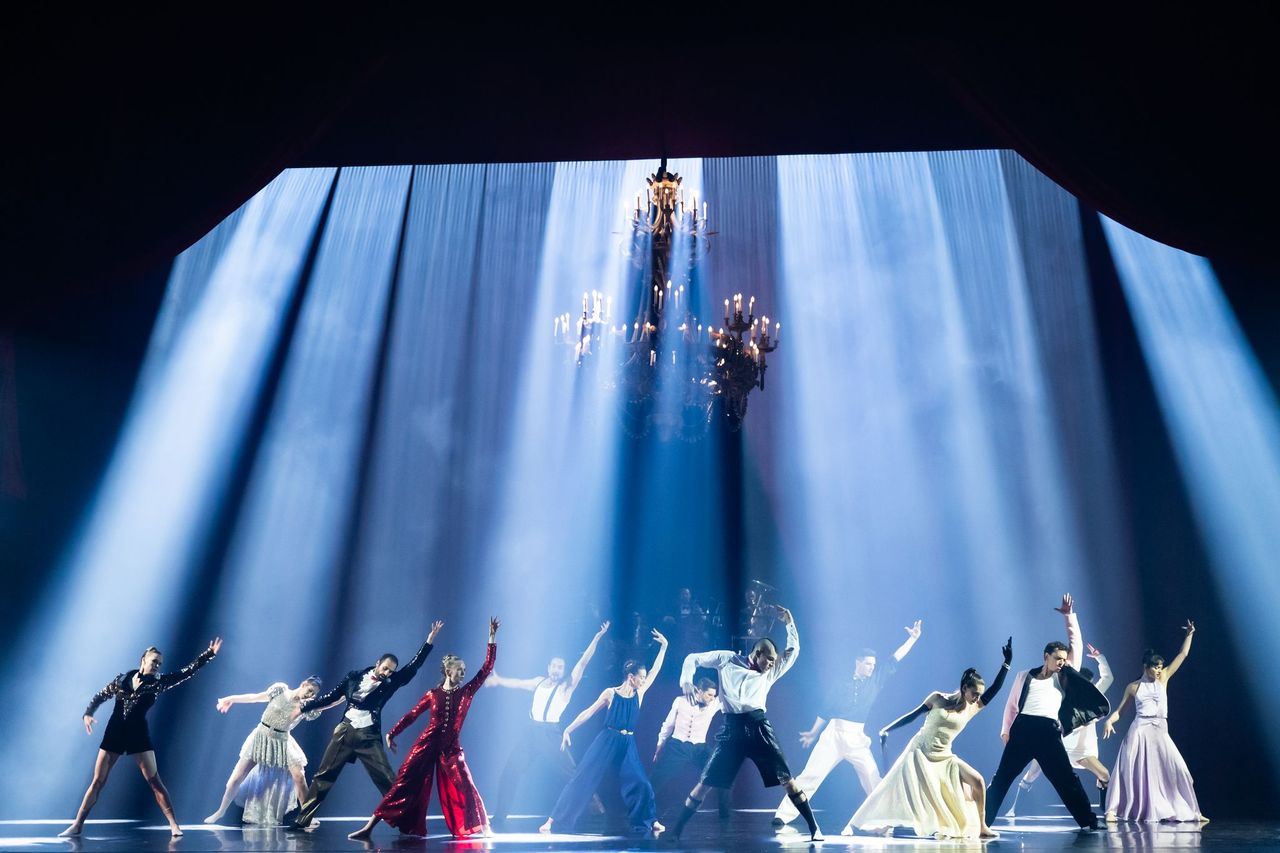
By the end, I was ready to leave. I grew tired, not of it, but by it. A good kind of tired, perhaps, like one feels after a tough work-out at the gym. Energy-wise, Shechter’s piece demands a lot of the viewer. You can’t watch it passively. The music is too involving, and the choreography requires laser-focused attention, if you want to fully experience all the riches it contains.




